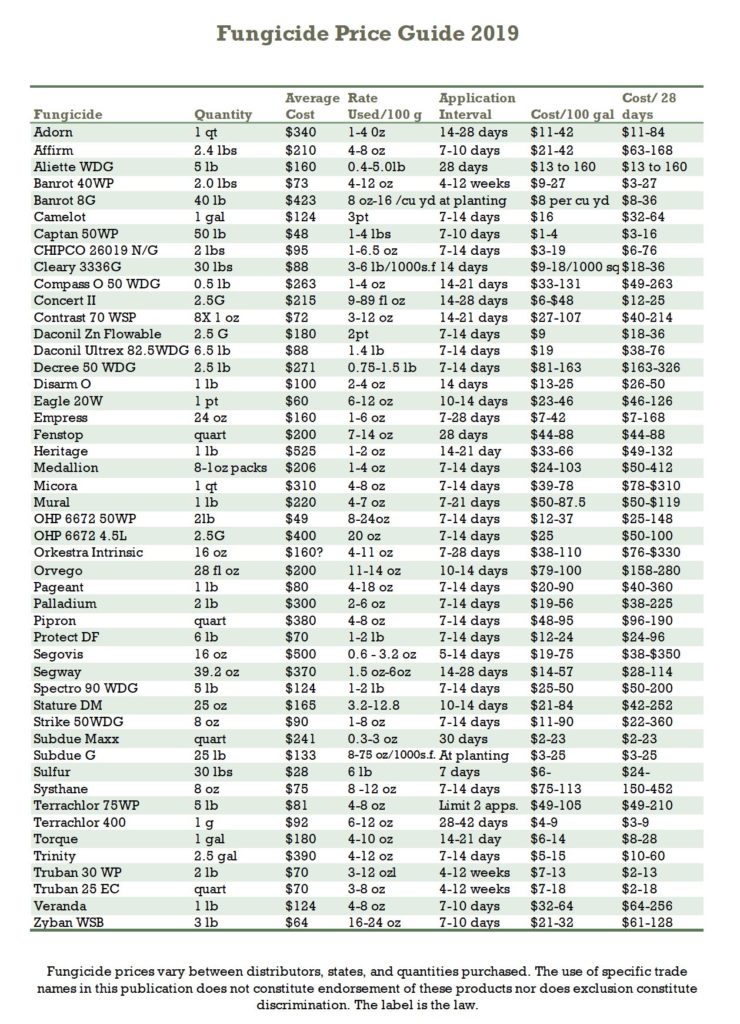Fungal diseases of ornamentals will always be a limitation to profitable plant production and management—how significant that limitation is in your hands. Fungicides are effective in reducing the risk of loss– in numbers, in quality and in terms of aesthetics. However, fungicide costs in terms of product cost, number of applications and labor need to be evaluated against the benefits their use provides. It is important to keep in mind that these costs and benefits vary between greenhouse, nursery and landscape use; in the case of greenhouse and nursery, these costs are also weighed against plant (commodity) prices.
That said, there are several effective, and cost-effective fungicides available for each type of user, keeping in mind that what is effective and cost-effective for one may not be effective for another. For example, a pathogen like Rhizoctonia infects plants in the greenhouse, nursery, turf, and landscape! What is best for one user isn’t necessarily best for another. Prostar (formerly Contrast) has excellent intrinsic activity against Rhizoctonia, and is important in the control of brown patch of turf. However, flutalonil, the active ingredient in Prostar, has a limited spectrum of pathogens it impacts (namely, basidiomycetes and diseases like rust and southern blight). This most likely makes it not the best choice for nursery, greenhouse, arborists or landscape managers that do not manage turf. For them a fungicide like Broadform, Compass, Heritage/Aframe, Pageant or Orkestra improve performance; for production, Empress (limited to production ornamentals), Heritage and Pageant are better choices. This choice also provides control against an assortment of fungal and pseudofungal pathogens.
As you can see from this example, pathogens management allows multiple choices. However cost is not the only factor to keep in mind. Be sure to balance efficacy with how much fungicide you need to apply, how frequently applications need to occur and the cost of rotation partners (always be sure to rotate any fungicide without a FRAC Code M!). To help with this, I’ve created a table that takes into account spray interval and rate(dose). What you’ll discover when looking at this table is that an expensive product at a low rate and less frequent interval is far less costly than a product that requires a high rate and/or frequent application interval. These costs were computed at the 100 gallon price and average price for the fungicide was determined after consultation with technical representatives and distributors. Please keep in mind that fungicide prices vary between distributors, states, and amount purchased. Lastly, this list does not imply endorsement, nor does exclusion imply disapproval.
